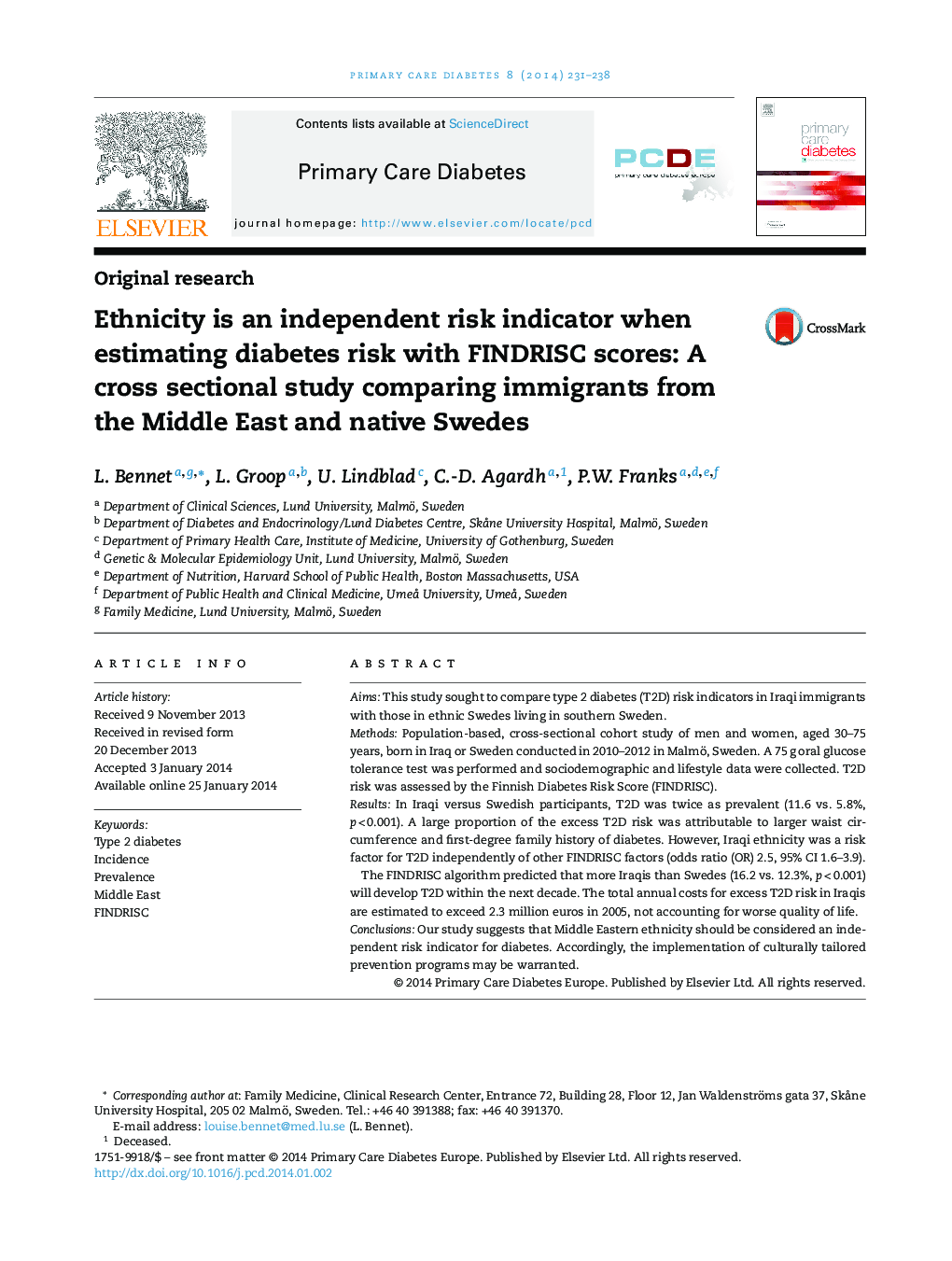| Article ID | Journal | Published Year | Pages | File Type |
|---|---|---|---|---|
| 2676157 | Primary Care Diabetes | 2014 | 8 Pages |
AimsThis study sought to compare type 2 diabetes (T2D) risk indicators in Iraqi immigrants with those in ethnic Swedes living in southern Sweden.MethodsPopulation-based, cross-sectional cohort study of men and women, aged 30–75 years, born in Iraq or Sweden conducted in 2010–2012 in Malmö, Sweden. A 75 g oral glucose tolerance test was performed and sociodemographic and lifestyle data were collected. T2D risk was assessed by the Finnish Diabetes Risk Score (FINDRISC).ResultsIn Iraqi versus Swedish participants, T2D was twice as prevalent (11.6 vs. 5.8%, p < 0.001). A large proportion of the excess T2D risk was attributable to larger waist circumference and first-degree family history of diabetes. However, Iraqi ethnicity was a risk factor for T2D independently of other FINDRISC factors (odds ratio (OR) 2.5, 95% CI 1.6–3.9).The FINDRISC algorithm predicted that more Iraqis than Swedes (16.2 vs. 12.3%, p < 0.001) will develop T2D within the next decade. The total annual costs for excess T2D risk in Iraqis are estimated to exceed 2.3 million euros in 2005, not accounting for worse quality of life.ConclusionsOur study suggests that Middle Eastern ethnicity should be considered an independent risk indicator for diabetes. Accordingly, the implementation of culturally tailored prevention programs may be warranted.
